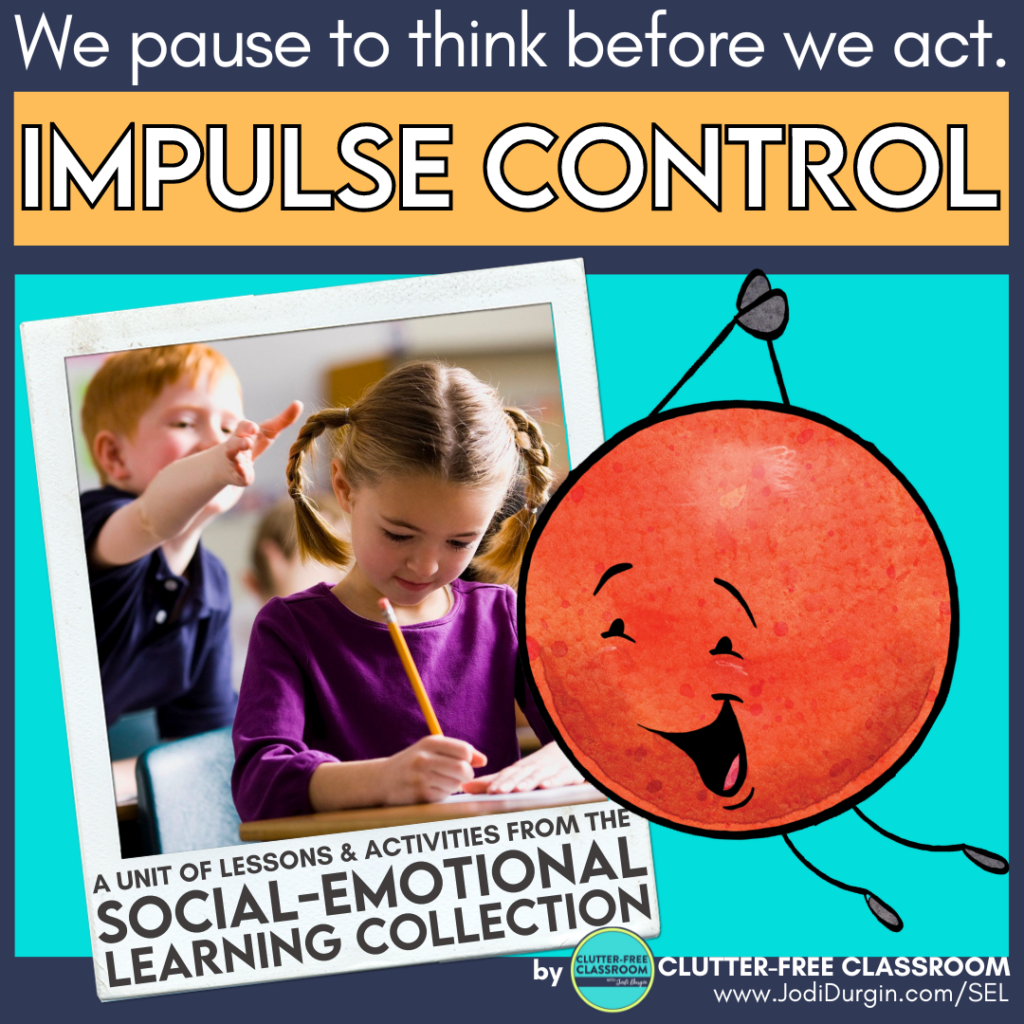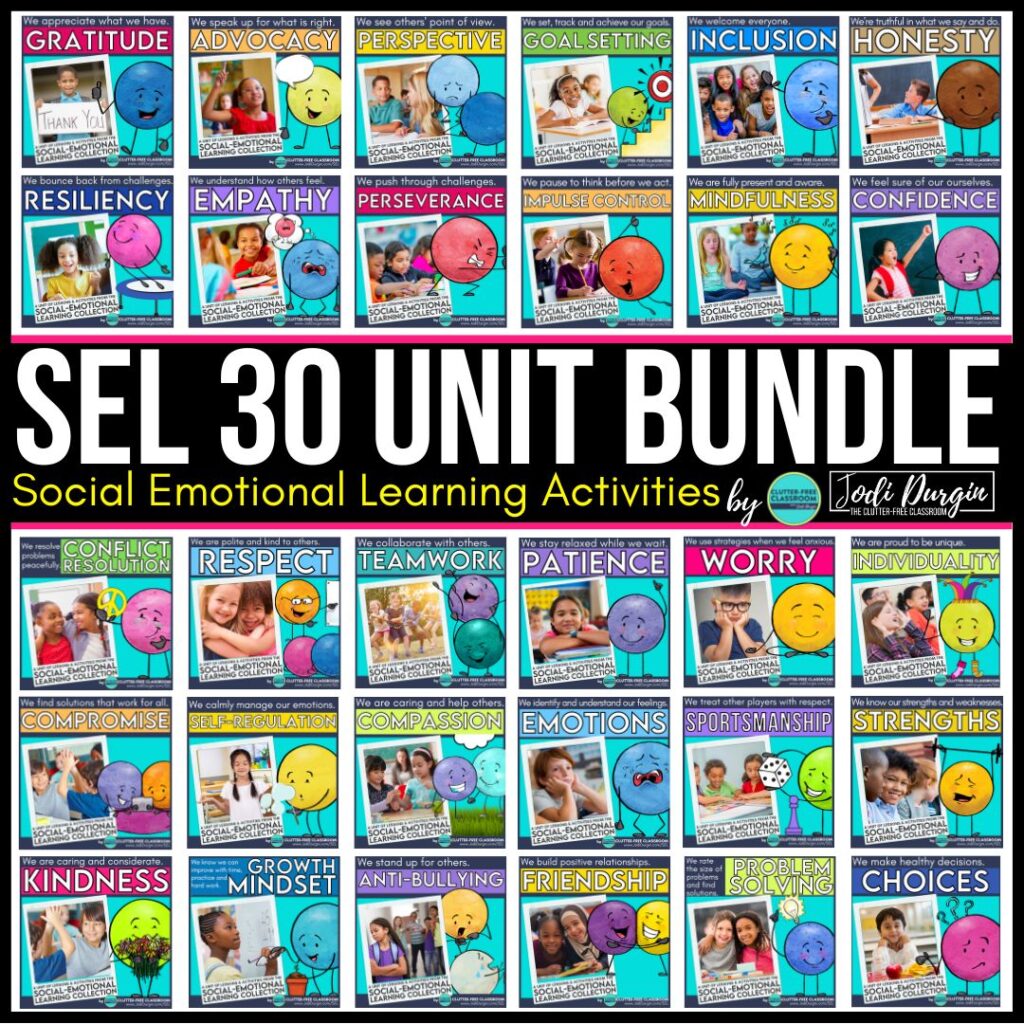If you are an elementary teacher looking to learn how to help your students control their impulses, then you found the right place! Impulse control skills prepare kids to regulate their behavior. Students who are able to control their impulses are more independent than students who cannot. In this post, we’ll go into detail about what impulse control is and why it’s important. In addition, we’ll share tips and ideas for how to teach impulse control skills in an elementary classroom setting. Read all about helping students control their impulses in and out of the classroom below!
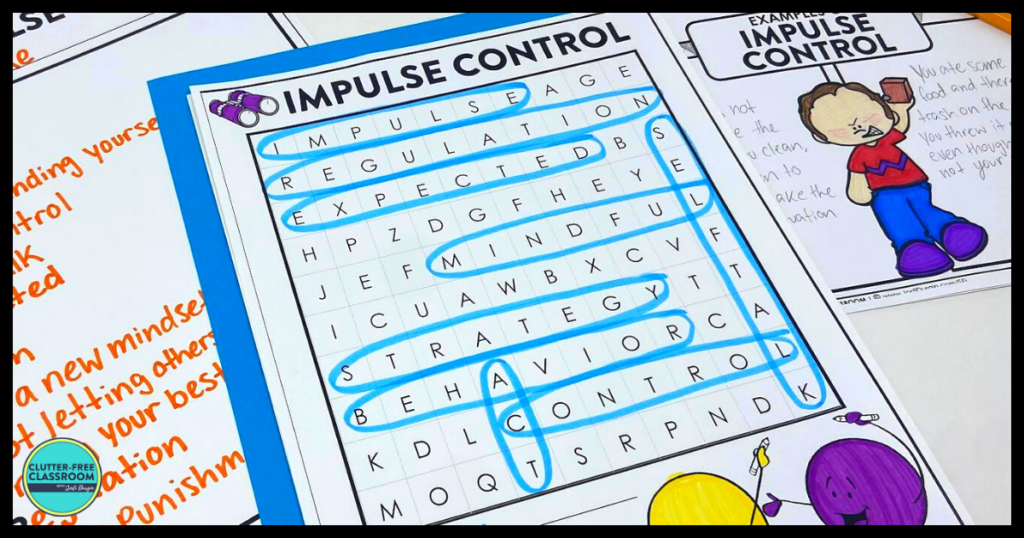
What Does Impulse Control Mean?
Impulse control is the ability of a person to control their behaviors in different situations. A person who has impulse control is able to control their reactions to different emotions and environmental factors.
Why is it Important for Kids to Use Impulse Control?
It is important for kids to use impulse control because it gives students the ability to say no to actions and behaviors that are not appropriate. It also allows them to control their emotions and pick an appropriate reaction versus giving into their impulse of negative behavior.
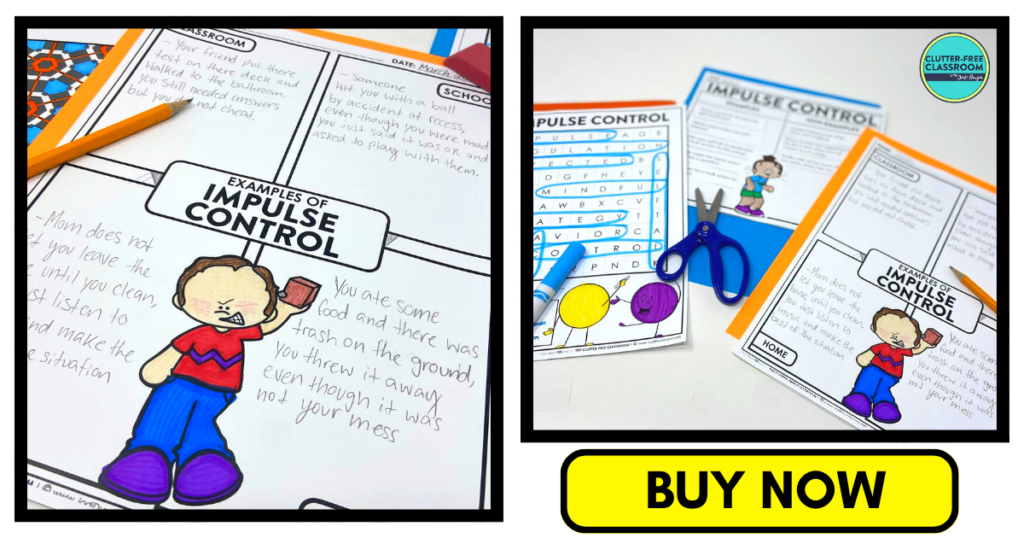
How Do I Know If I Need to Teach Impulse Control in My Classroom?
The students in your 1st, 2nd, 3rd, 4th or 5th grade classroom would benefit from impulse control lessons and activities if any of these statements are true:
- Students are shouting out.
- Students are acting without thinking.
- They say whatever comes into their mind.
- You are having more behavioral issues.
- Students are struggling with self-regulation.
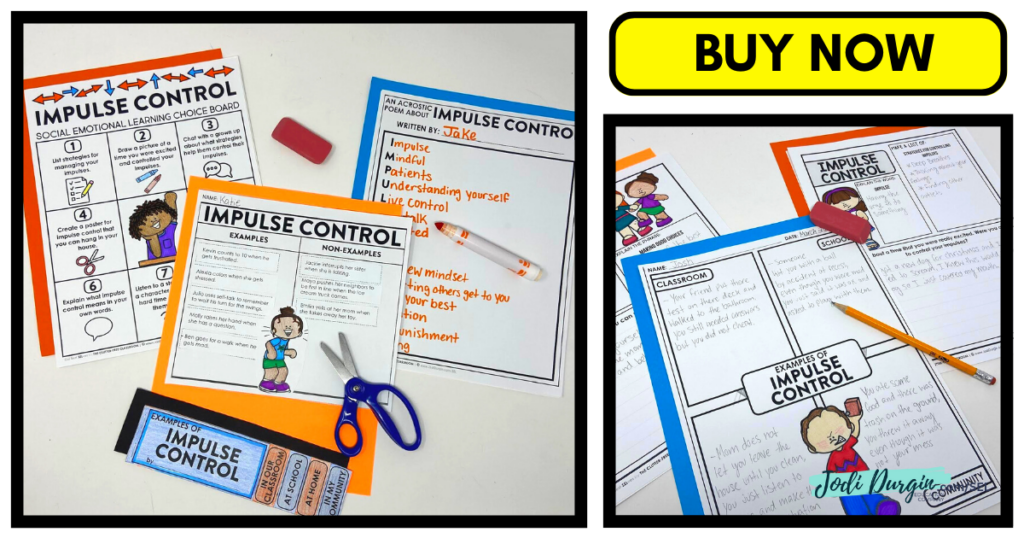
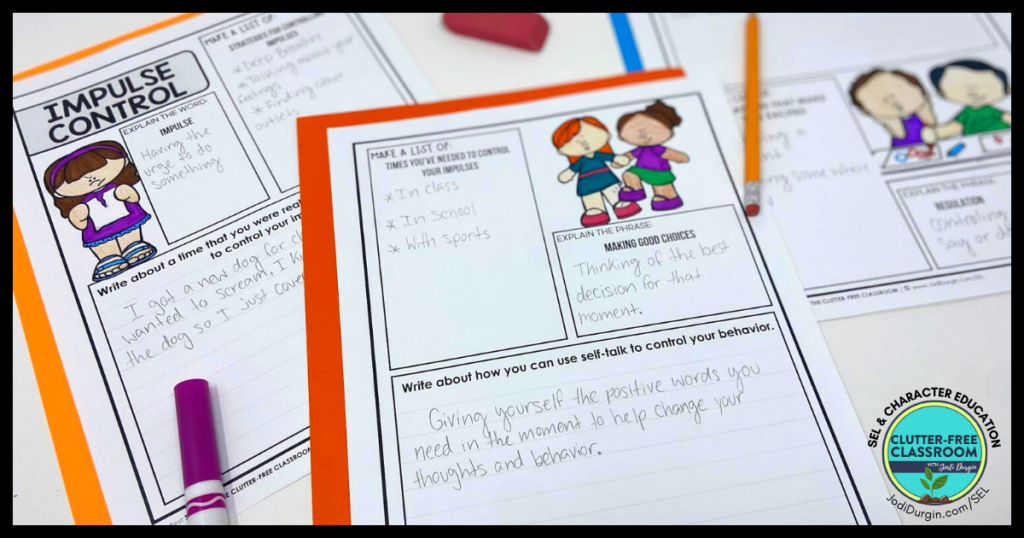
5 Reasons To Promote Impulse Control In Your Elementary Classroom
Below are 5 reasons to promote impulse control in your elementary classroom.
1. Students will become more independent
Students who are learning to control their impulses will become more independent through learning self-control. They will need help learning how to control their impulses, but the end goal will be that they can independently control their impulses.
2. You will gain back instructional time
Teaching students impulse control will get your instructional time back. At first, students will need explicit instruction in how to control their impulses, but once they gain understanding you will save yourself time. Imagine the amount of time you spend managing behaviors and dealing with student incidents. Now imagine getting that time back.
3. Students will be more reflective on their behavior
Impulse control causes students to be more reflective on their behavior because it makes them stop and think about what they are feeling and how to manage their feelings. Students will also reflect on whether or not they would pick the same self regulation strategy again and whether or not they were able to control their impulses.
4. Students will have better thoughts about each other
Through the whole class learning impulse control, students will gain better thoughts about each other and tolerance. Students will be able to see how hard each person is working at controlling their impulses. Teaching impulse control also helps students realize that something when students act out it is because they have lost control and that is something people struggle with. This will create better understanding and compassion for each other.
5. Students will be more self-aware
Students naturally become more self-aware through learning impulse control. They will need to be aware of what they are thinking and feeling and what strategy will work best for them to control their impulses. They will gradually get faster at the process of controlling their impulses as they become more self-aware.
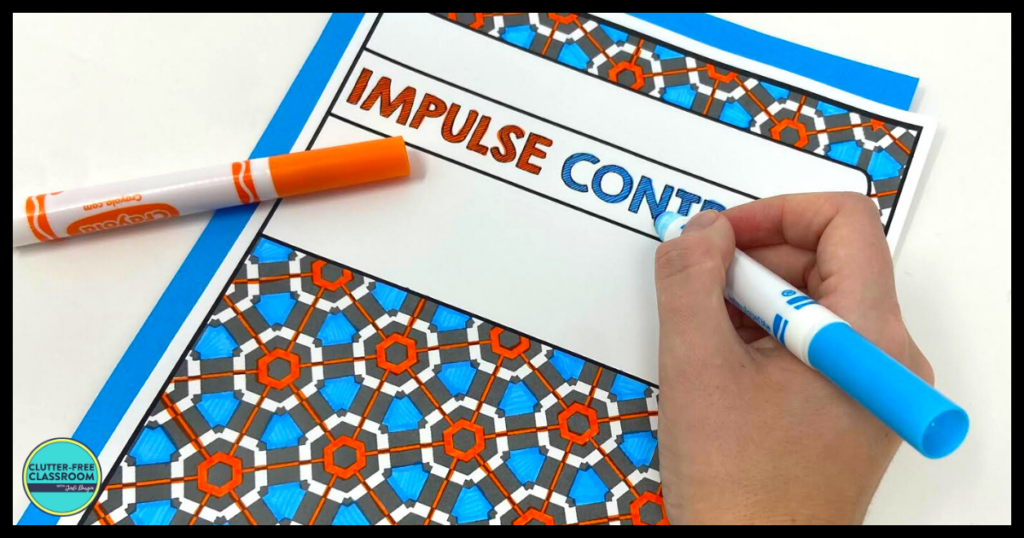
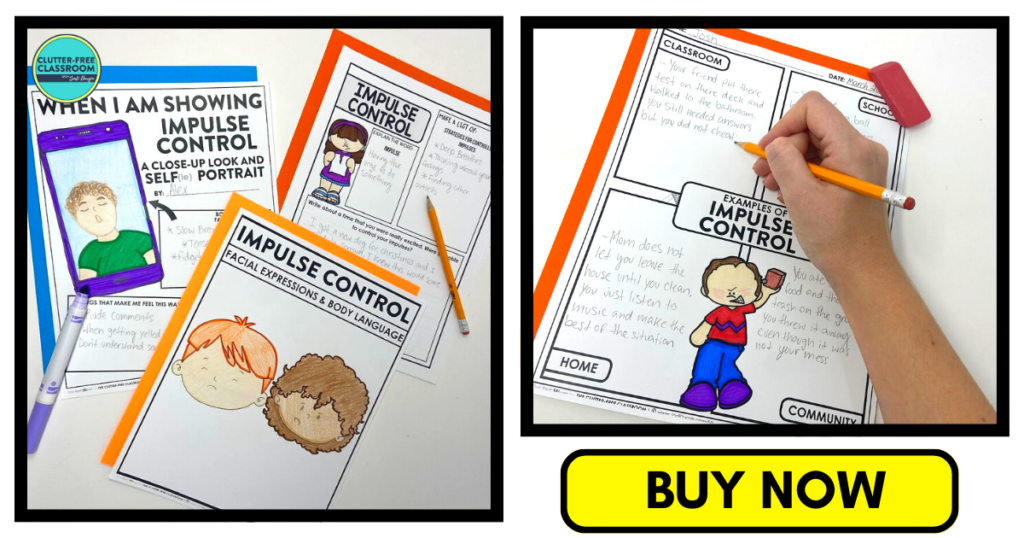
5 Tips and Ideas for Teaching Impulse Control
Check out the tips and ideas for teaching impulse control below!
1. Read Aloud Picture Books about Impulse Control
Picture books are a great way to introduce and teach an SEL topic. It gets students thinking about the topic and activating their background knowledge. Check out this list of picture books for teaching impulse control!
2. Watch Videos about Impulse Control
There are tons of free online videos out there that promote social emotional learning. It’s a fun and engaging way to teach SEL skills that your students will enjoy. Check out these videos for teaching impulse control!
3. Explicitly Teach Vocabulary Related to Impulse Control
Vocabulary words can help students develop understanding of impulse control and create connections through related words. Our impulse control SEL unit includes ten vocabulary cards with words related to the SEL topic. It is important for students to be able to see, hear, and use relevant vocabulary while learning. One idea for how to use them is to create an SEL word wall as students learn the words.
4. Provide Practice Opportunities
When learning any skill, students need time to practice. Social emotional learning skills are no different! Our impulse control SEL unit includes scenario cards, discussion cards, choice boards, games, and much more. These provide students with opportunities to practice the skills independently, with partners or small groups, or as a whole class.
5. Integrate Other Content Areas
Integrating other content areas with this topic is a great way to approach this SEL topic. Our impulse control SEL unit includes reading, writing, and art activities.
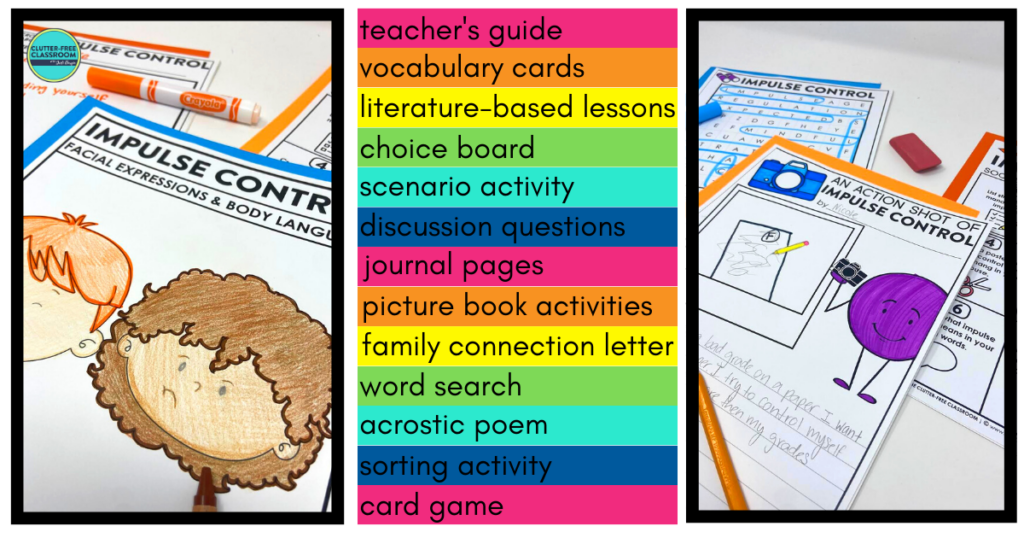
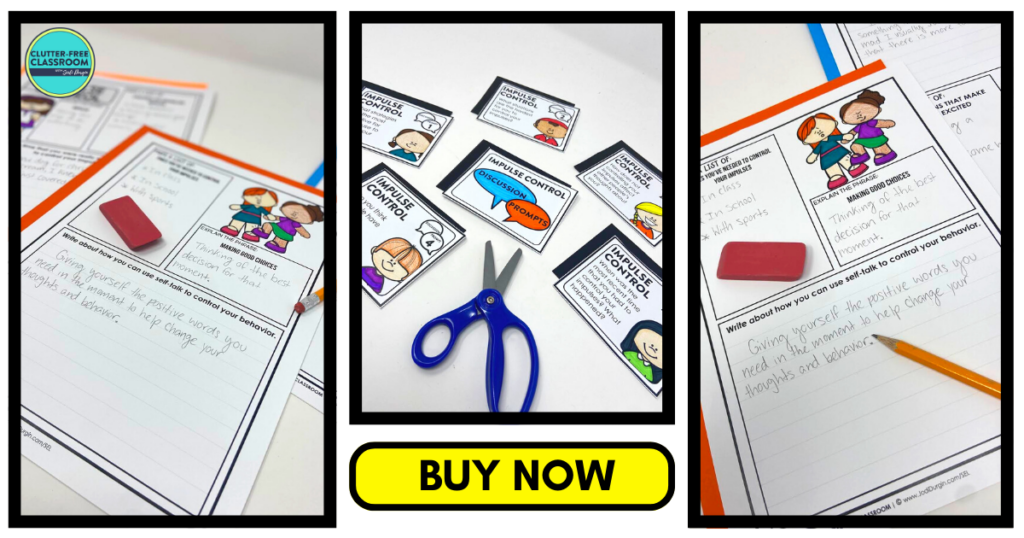
Skills Related to Impulse Control
Impulse control, in the context of social emotional learning (SEL) or character education, refers to the ability to manage and regulate one’s immediate urges, impulses, and reactions. While “impulse control” is the commonly used term, there are other words and phrases that can convey a similar meaning. These alternative words highlight aspects of self-control, restraint, and managing impulses. Here are some other words used in the context of impulse control:
- Self-discipline: Exercising control and willpower to resist impulsive behaviors and make deliberate choices.
- Self-regulation: Managing one’s emotions, thoughts, and behaviors in order to respond appropriately in different situations.
- Delayed gratification: Choosing to postpone immediate rewards or desires in favor of long-term goals or greater benefits.
- Self-restraint: Exerting control over one’s impulses and refraining from immediate or impulsive actions.
- Inhibition: Suppressing or restraining impulsive or automatic responses in order to make reasoned decisions.
- Self-command: Demonstrating authority and control over one’s actions, emotions, and impulses.
- Patience: The ability to remain calm and composed in the face of frustration or delayed gratification.
- Willpower: Harnessing inner strength and determination to resist immediate impulses or temptations.
- Thoughtful response: Taking the time to consider one’s actions and consequences before acting impulsively.
- Emotional regulation: Managing and controlling one’s emotional reactions and responses to different situations.
These terms encompass the concept of impulse control and reflect the qualities of self-control, restraint, and thoughtful decision-making within the context of social emotional learning (SEL) or character education.
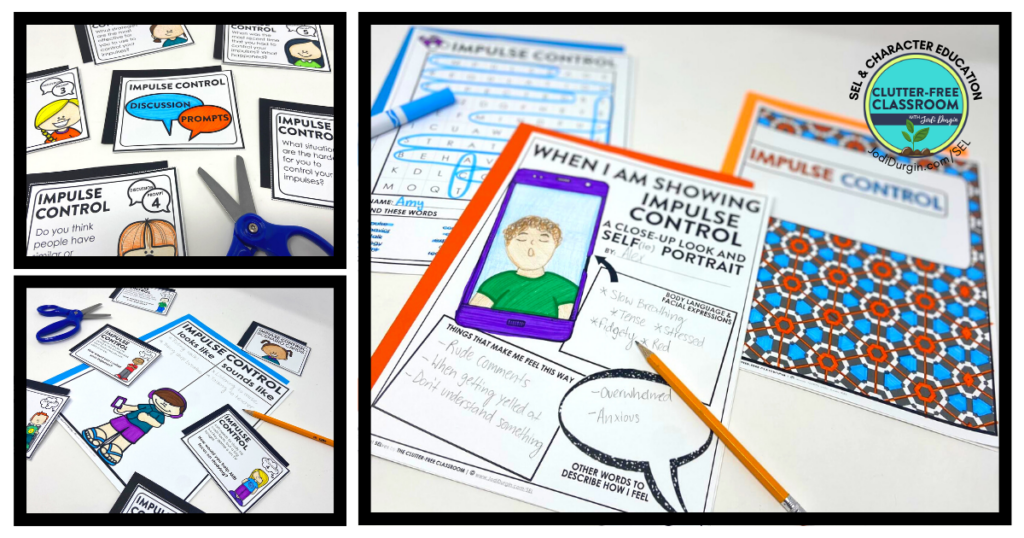
Download the SEL Activities
Click an image below to either get this individual impulse control unit or get ALL 30 SEL units
In closing, we hope you found this information about teaching impulse control helpful! If you did, then you may also be interested in these posts.

